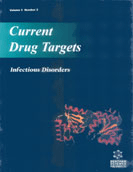Abstract
Recombinant therapeutic proteins, also referred to as biotherapeutics or
biologics, are widely used for the treatment of numerous diseases such as cancer,
diabetes and other non-communicable diseases. In addition, they also provide a
solution to several chronic and emerging viral diseases.
Most biologics are produced in animal host cells as they provide relevant protein
features, such as folding and post-translational modifications, similar to those produced
by humans.
However, these products usually face great challenges mainly related to high
manufacturing costs that may limit their use. To circumvent these issues, numerous
strategies have been proposed. While some approaches focus on improving protein
yield by introducing regulatory elements into the gene sequence, others specifically
aim to optimize cell protein expression performance through cell engineering. Here, we
will review the state of the art in the field of protein expression, focusing on the most
promising strategies to improve protein yield in animal cells.
Product safety constitutes another concern that may restrict the use of biotherapeutics.
Product safety constitutes another concern that may restrict the use of biotherapeutics.
Indeed, the development of unwanted immune responses against these drugs has been
extensively reported. These immunogenicity events are triggered as a consequence of a
breakdown in immune tolerance to the product. When a given biologic is administered
to a patient, it encounters a variety of innate and adaptive immune cells that ultimately
may orchestrate pro-inflammatory responses. Consequently, different scenarios may
take place ranging from the development of anti-drug neutralizing antibodies to tissue
damage. Hence, product immunogenicity is the main concern and should be closely
monitored during product manufacturing and also in the clinic. In this respect,
numerous in vitro and in vivo strategies are currently available, and more are still in
development. These experimental platforms include the use of specific human immune
cells, transgenic animals and even lymphatic micro-organoids. In this chapter, we will
comprehensively describe these experimental strategies and their use in pre-clinical
studies and clinical trials.
Keywords: Animal Cells, Cell Engineering, Clinical Trials, Experimental Platforms, Immunogenicity, Lymphatic Micro-Organoids, Neutralizing Antibodies, Protein Yield, Regulatory Elements, Therapeutic Proteins, Transgenic Mice.






















